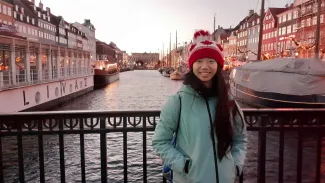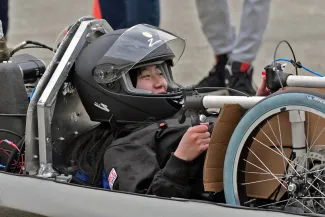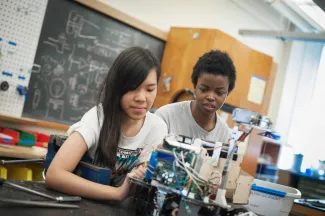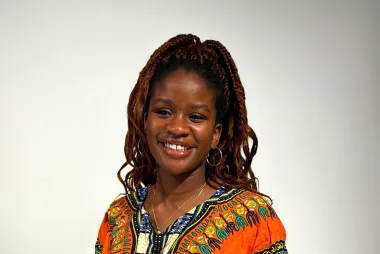
Michelle Li
- Degree:
- Bachelor of Applied Science
- Grad year: 2024
- Program:
- Campus: Vancouver
Job: Application Engineer, Cadence Design Systems
What got you interested in engineering?
I really enjoyed math and physics in high school and I was originally interested in pursuing physics in university. But then I asked myself, ‘what if I don’t like research? What am I going to do with this degree?’
I attended a UBC outreach event that focused on women in engineering, which introduced me to the idea that engineering is all about applying math and physics to solve real-world problems – and that’s what led me to see engineering as a possibility.
Any highlights from your courses?
A third-year course in machine learning where we trained a robot to navigate around a terrain was very interesting to me. In addition, Engineering Physics students do two capstone projects, and these were also great learning opportunities. I used my capstone projects to gain knowledge in electrical engineering, which was an area I was really interested in.
Tell us about your exchange to Denmark.
I knew I wanted to experience studying in another place because I grew up in Vancouver and chose to go to university here too.
UBC’s Coordinated International Experience exchange program includes many different partner institutions and I was most interested in the Technical University of Denmark.
It was a great experience, with a definite highlight being all the travel I was able to do! I stacked up my courses on Wednesdays and Thursdays, which gave me time to explore and travel while still putting in the time needed for my coursework. The approach at DTU is a little different – rather than a lot of assignments or homework each week, you are primarily assessed on one large project that you work on in collaboration with others over the semester.

Tell us about your life after graduating!
After doing an interview as I was travelling to Norway while on exchange, I was offered a position as an application engineer for Cadence Design Systems, a company that develops design and simulation software and other products for a wide range of industries.
Cadence makes software that electrical engineers use in their work – in fact, I used Cadence’s tools as an undergrad.
In my position, I am working at the interface between our in-house software engineers and our electrical engineering clients. I have the technical knowledge to help our customers with their designs and simulations. And there’s lots of problem solving involved.
This position is set up specifically for new grads, so it is very learning focused and we cycle through different rotations to learn different products and gain skills in different domains of electrical engineering.






